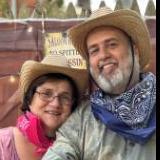The Wonder That Bends — a Glimpse of Wonder entry™ —
The Wonder That Bends
— a Glimpse of Wonder entry™ —
Not everyone has seen it — the way the wind rolls across a field of wheat. But if you ever stand there long enough to watch, you’ll see something that doesn’t quite fit into words. The air doesn’t just move the grass; it shapes it. It pushes, tugs, pulls — and somehow, the whole field seems to breathe. You can almost feel the conversation between the earth and the sky.
What makes the grass able to do that? Why doesn’t it snap like so many other things would? It looks fragile, but there’s engineering in that slender form — an invisible wisdom built into every stem.
Grasses, it turns out, are some of the world’s most flexible survivors. Wheat, rice, barley — even the quiet patch of lawn outside your window — all share a secret in common. Their stems are hollow, segmented by solid joints called nodes, and anchored by a web of fine, fibrous roots that hold the soil like woven cloth. When the wind presses in, those stems don’t fight back. They bend. They realign. They turn into airfoils, reshaping themselves around the wind so that the harder the gust blows, the less resistance they offer. That’s not just survival — it’s brilliance.
According to plant researchers, grasses can reduce wind drag by as much as seventy percent simply by bending. The faster the wind moves, the more they yield. What looks like weakness is, in truth, a masterclass in efficiency.
Watch closely next time. The windward side of each stalk is under pressure — compressed until it bows — while the leeward side stretches under tension. The breaking point never comes because the plant was designed to share the strain, to move with the invisible hand that shapes it. Even the damage that does come — a stalk flattened by rain or grain-heavy weight — rarely means death. Lodged wheat might lean, even lie down for a while, but its roots still hold fast. The design doesn’t fail; it adapts.
What kind of wisdom builds a world like that? A world where even the smallest blade of grass is tuned to endure the unseen? The same wisdom, perhaps, that invites us to do the same.
When life’s winds press against us — when change feels relentless or the pressure unending — we often think the answer is to stand our ground. But maybe the field is teaching us something gentler. Maybe strength isn’t measured by how unbending we are, but by how we yield. How we trust.
Because that’s what the grass does — it trusts the design. It doesn’t fight the storm; it leans into it. And in doing so, it teaches us something about faith. About flexibility. About knowing that yielding isn’t giving up; it’s allowing a greater hand to move through you.
The Bible says, “By wisdom Jehovah founded the earth” (Proverbs 3:19). When you look at a field bending beneath the wind, you’re seeing that wisdom at work. Every bend, every sway, every root that refuses to let go — it’s all part of a system made not just to survive, but to harmonize with what comes.
So maybe the next time you step outside and the wind picks up, pause. Listen. Watch how the grass shifts and steadies itself again. Ask yourself — what’s it teaching me about the kind of strength that endures? About the trust that bends but doesn’t break?
Jehovah didn’t just make the wind and the grass. He made us capable of standing there, watching, and wondering. That, too, is a gift — the ability to feel awe at something as small as a blade of grass and see in it the wisdom of the One who designed both storm and shelter.
Tags: design, resilience, faith, creation, wisdom, trust
|
Edited by dljbsp
- Roxessence and Mike047
-
 1
1
-
 1
1


2 Comments
Recommended Comments
Join the conversation with your brothers and sisters!
You are posting as a guest. If you are already a member, sign in now to post with your existing account.
Note: Your post will require moderator approval before it will be visible.